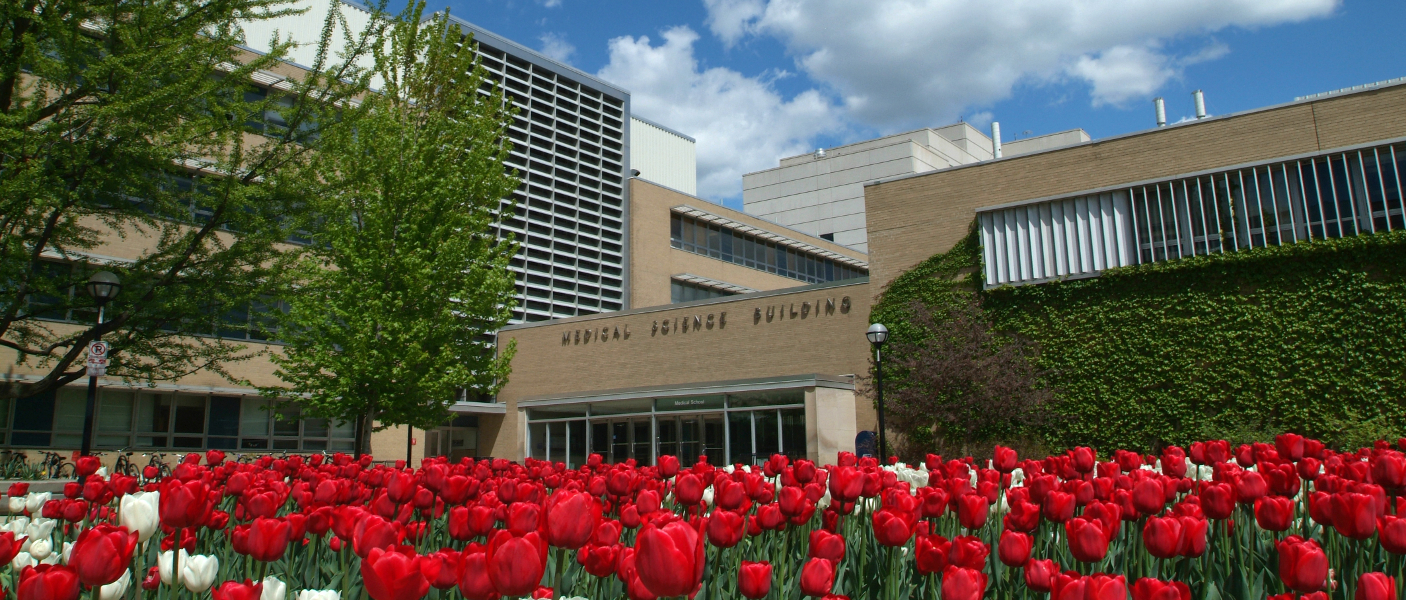

What is PathTrack?
It’s a web-based application created by the Pathology Informatics group that enables users to create bins of specimens and move them within our institution in real time. PathTrack actively listens to what is happening in Soft and limits any potential double-work with the tracking of specimens. PathTrack can be accessed via Google Chrome at https://pathtrack.med.umich.edu
Why are we doing this?
Close to 6 million tests are performed annually by Pathology and all those specimens are routed to different laboratories across multiple campuses on a daily basis. The need for a more robust tracking system became especially evident with the pending move of several labs to the North Campus Research Complex (NCRC).
When did the PathTrack project start?
The PathTrack technical team first began meeting in March of 2017 and spent several months understanding the users’ needs and planning the best approach to build the application.
Who is part of the technical team?
The core technical team is made up of Bill Hubbard, Todd Kandow, John Hamilton, and Brian Royer. As needs outside their expertise are identified, other individuals mainly from Pathology Informatics are consulted.
Is PathTrack ready to use?
The first PathTrack pilot began on March 5, 2018 and will run through March 17, 2018. The pilot involves the tracking of specimens from Specimen Processing to Molecular Diagnostics out at Traverwood. After this pilot concludes, other pilots will be planned for the labs that are moving out to NCRC.
When will I be trained on using PathTrack?
Training plans and calendars are currently being put together and will take into consideration the timing of when individuals are moving to NCRC. The goal is to train them close enough to the move so the information is fresh in their minds but not too far in advance where there is a long duration before they use PathTrack.
Will we just use PathTrack to move specimens out to NCRC?
Initially, PathTrack will be used by staff to move specimens from UH to NCRC and back. However, there are plans and projects teams already in place and planning how to implement the same technology at our on-site Phlebotomy locations and off-site clinics. Eventually, all Michigan Medicine Pathology sites will be tracking specimens in PathTrack.
Will PathTrack replace Soft?
No, we will still use Soft as our Lab Information System (LIS) and PathTrack will be the source of truth regarding where a specimen is. PathTrack is designed to track actual specimens and not tests. For example, if there was one SST collected and multiple labels printed for the different tests that the Chemistry lab had to perform, only one of those labels would be placed on the SST tube and that would be the only specimen tracked in PathTrack. In other words, there is a one to one relationship between the actual physical specimens and the virtual specimens in PathTrack.
Will PathTrack take more time to use?
As with any new application, there will be a learning curve associated with the additional tracking steps required for specimens moving between our major laboratory sites. However, the benefits of being able to know the tracking locations of each our patient assets are immense, such as decreasing the incidence of lost or misplaced specimens and creating accurate reports for workflow and process enhancements.
Who should I contact if I have questions?
Please feel free to reach out to the Project Manager, Brian Tolle at briantol@med.umich.edu
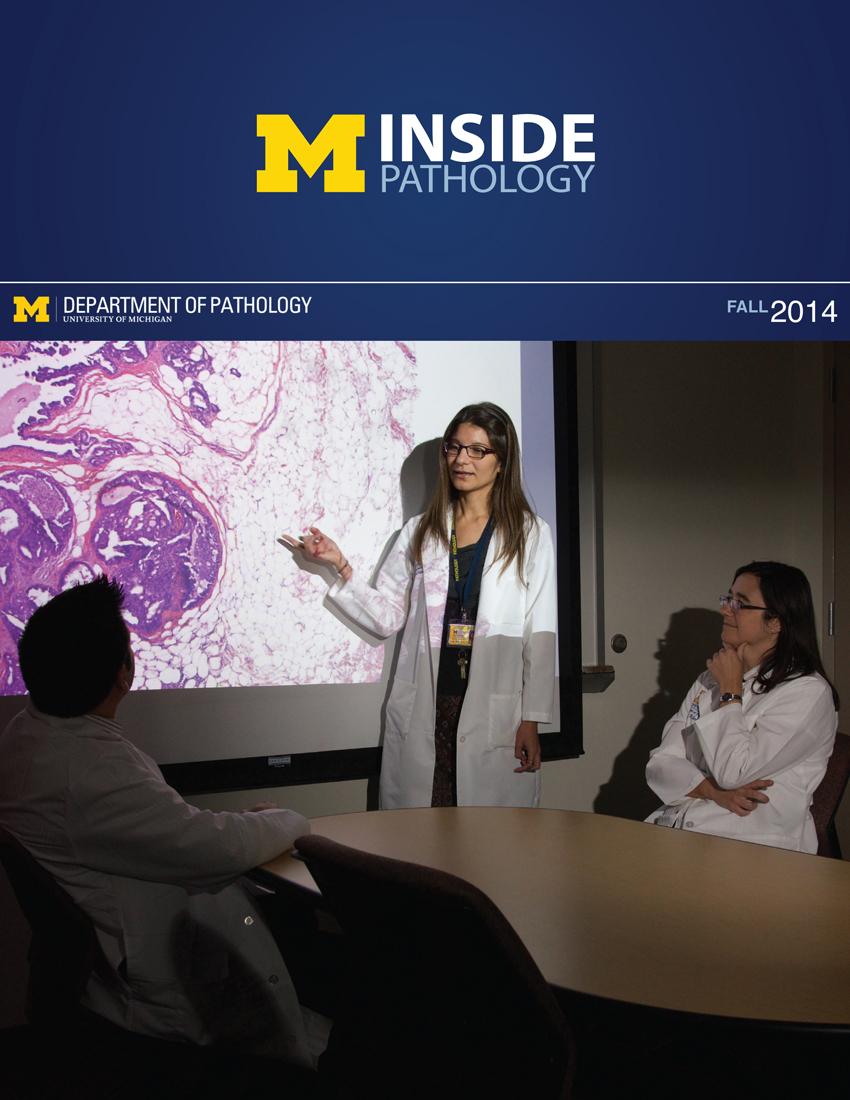 ON THE COVER
ON THE COVER
Breast team reviewing a patient's slide. (From left to right) Ghassan Allo, Fellow; Laura Walters, Clinical Lecturer; Celina Kleer, Professor. See Article 2014Department Chair |

newsletter
INSIDE PATHOLOGYAbout Our NewsletterInside Pathology is an newsletter published by the Chairman's Office to bring news and updates from inside the department's research and to become familiar with those leading it. It is our hope that those who read it will enjoy hearing about those new and familiar, and perhaps help in furthering our research. CONTENTS
|
 ON THE COVER
ON THE COVER
Autopsy Technician draws blood while working in the Wayne County morgue. See Article 2016Department Chair |

newsletter
INSIDE PATHOLOGYAbout Our NewsletterInside Pathology is an newsletter published by the Chairman's Office to bring news and updates from inside the department's research and to become familiar with those leading it. It is our hope that those who read it will enjoy hearing about those new and familiar, and perhaps help in furthering our research. CONTENTS
|
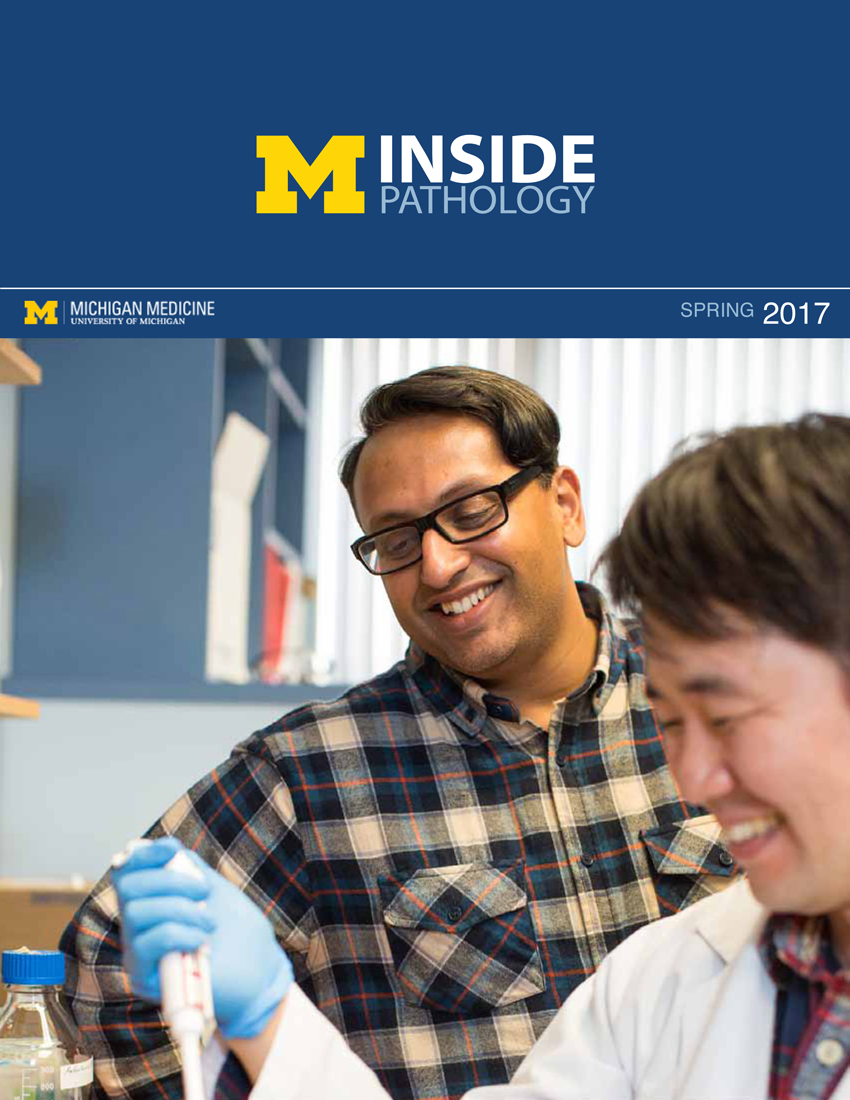 ON THE COVER
ON THE COVER
Dr. Sriram Venneti, MD, PhD and Postdoctoral Fellow, Chan Chung, PhD investigate pediatric brain cancer. See Article 2017Department Chair |

newsletter
INSIDE PATHOLOGYAbout Our NewsletterInside Pathology is an newsletter published by the Chairman's Office to bring news and updates from inside the department's research and to become familiar with those leading it. It is our hope that those who read it will enjoy hearing about those new and familiar, and perhaps help in furthering our research. CONTENTS
|
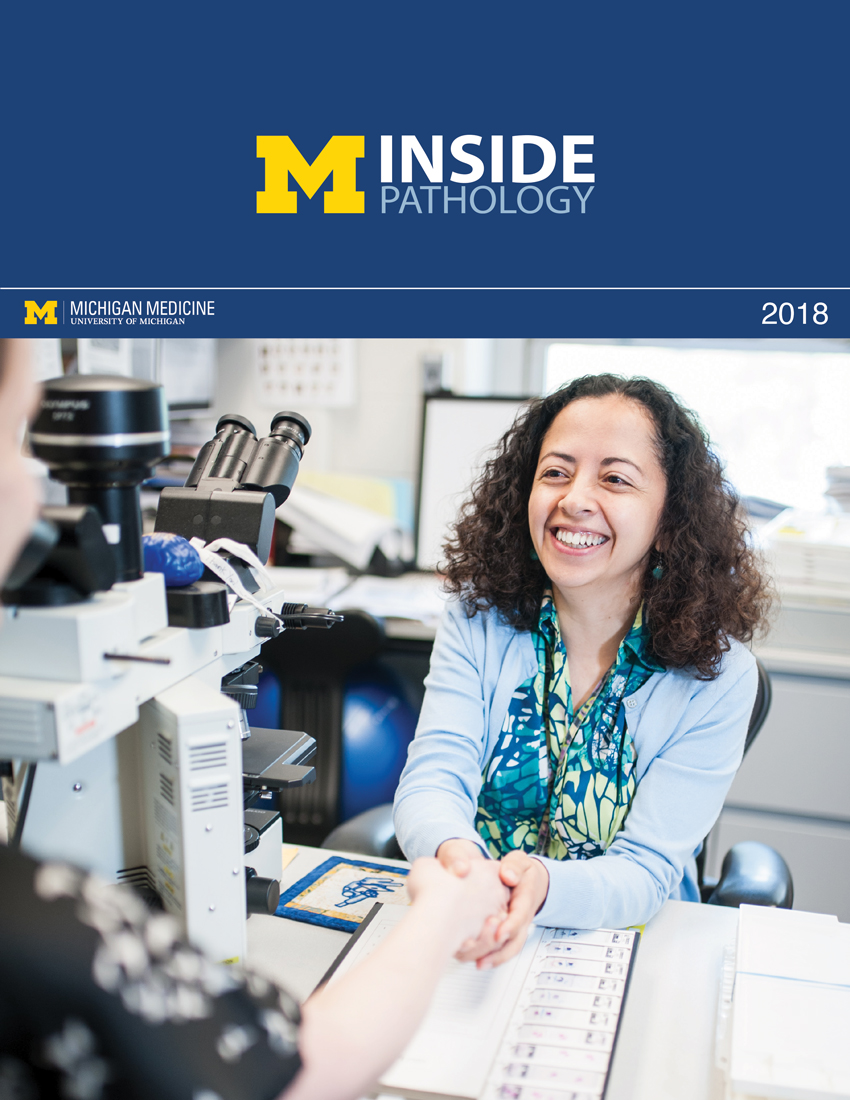 ON THE COVER
ON THE COVER
Director of the Neuropathology Fellowship, Dr. Sandra Camelo-Piragua serves on the Patient and Family Advisory Council. 2018Department Chair |

newsletter
INSIDE PATHOLOGYAbout Our NewsletterInside Pathology is an newsletter published by the Chairman's Office to bring news and updates from inside the department's research and to become familiar with those leading it. It is our hope that those who read it will enjoy hearing about those new and familiar, and perhaps help in furthering our research. CONTENTS
|
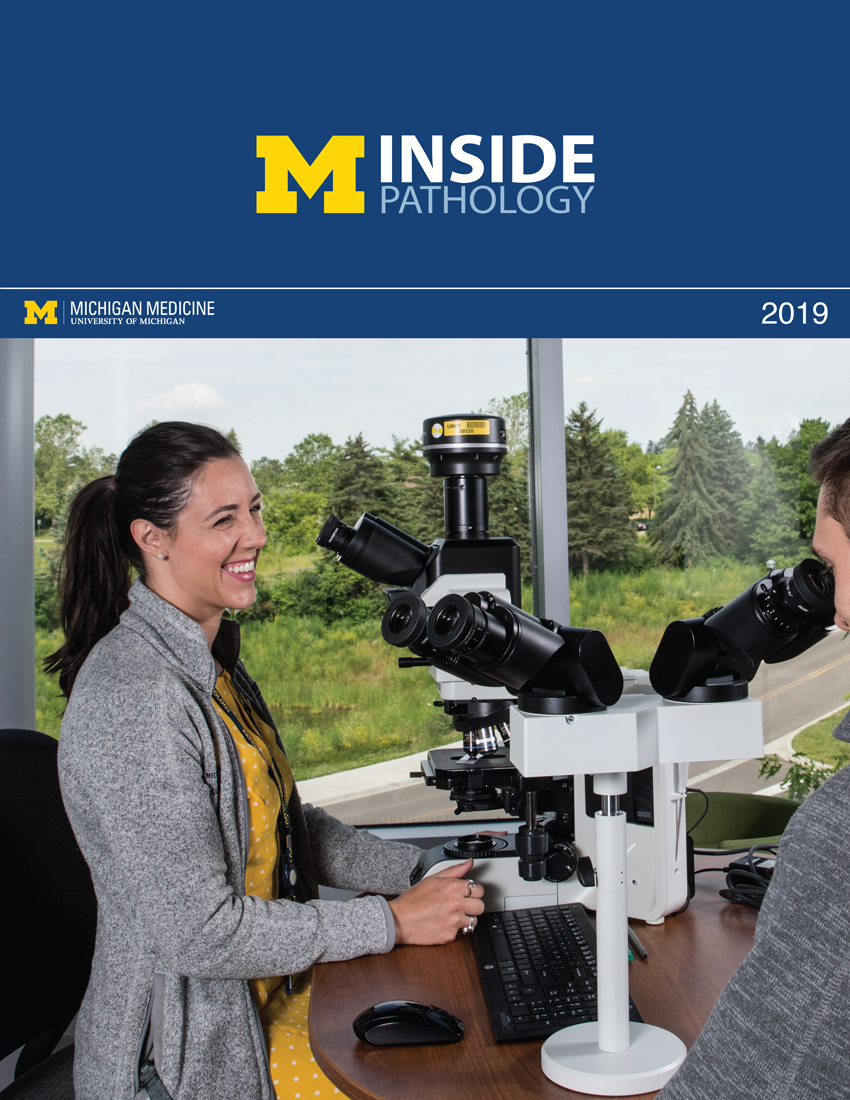 ON THE COVER
ON THE COVER
Residents Ashley Bradt (left) and William Perry work at a multi-headed scope in our new facility. 2019Department Chair |

newsletter
INSIDE PATHOLOGYAbout Our NewsletterInside Pathology is an newsletter published by the Chairman's Office to bring news and updates from inside the department's research and to become familiar with those leading it. It is our hope that those who read it will enjoy hearing about those new and familiar, and perhaps help in furthering our research. CONTENTS
|
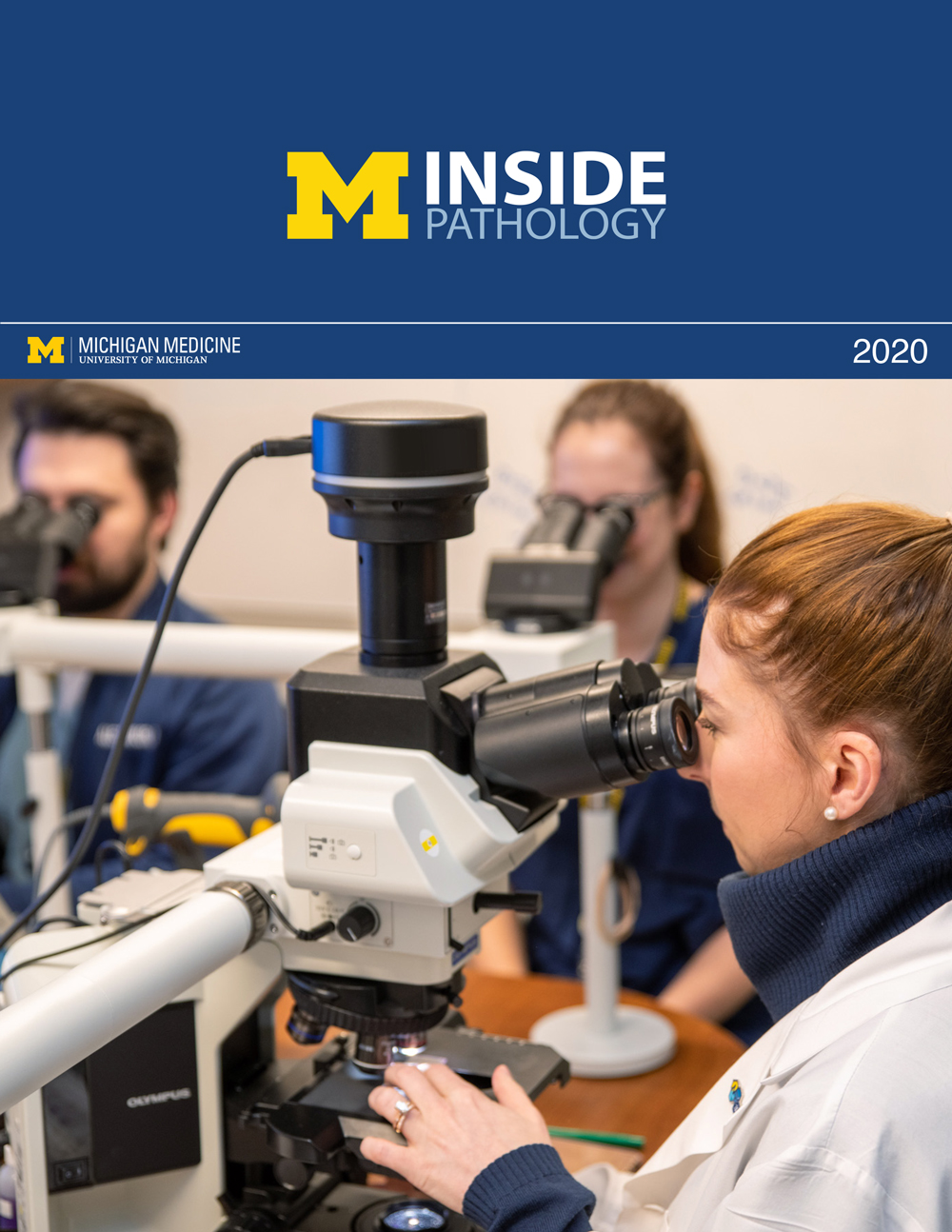 ON THE COVER
ON THE COVER
Dr. Kristine Konopka (right) instructing residents while using a multi-headed microscope. 2020Department Chair |

newsletter
INSIDE PATHOLOGYAbout Our NewsletterInside Pathology is an newsletter published by the Chairman's Office to bring news and updates from inside the department's research and to become familiar with those leading it. It is our hope that those who read it will enjoy hearing about those new and familiar, and perhaps help in furthering our research. CONTENTS
|
 ON THE COVER
ON THE COVER
Patient specimens poised for COVID-19 PCR testing. 2021Department Chair |

newsletter
INSIDE PATHOLOGYAbout Our NewsletterInside Pathology is an newsletter published by the Chairman's Office to bring news and updates from inside the department's research and to become familiar with those leading it. It is our hope that those who read it will enjoy hearing about those new and familiar, and perhaps help in furthering our research. CONTENTS
|
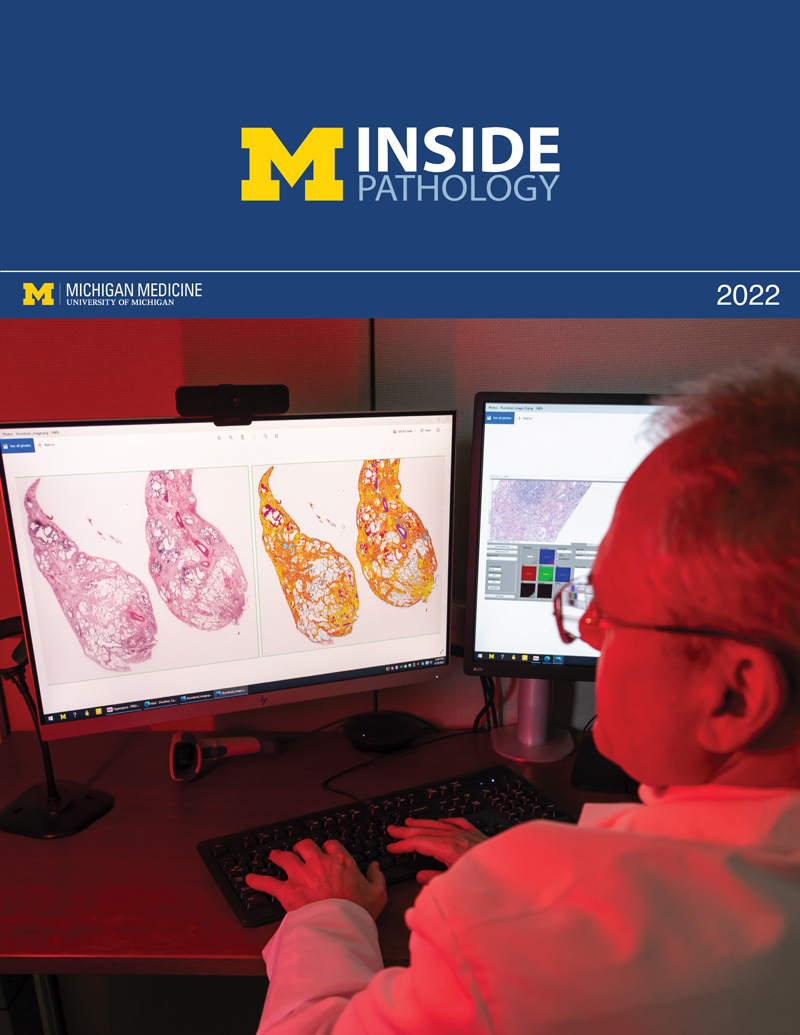 ON THE COVER
ON THE COVER
Dr. Pantanowitz demonstrates using machine learning in analyzing slides. 2022Department Chair |

newsletter
INSIDE PATHOLOGYAbout Our NewsletterInside Pathology is an newsletter published by the Chairman's Office to bring news and updates from inside the department's research and to become familiar with those leading it. It is our hope that those who read it will enjoy hearing about those new and familiar, and perhaps help in furthering our research. CONTENTS
|
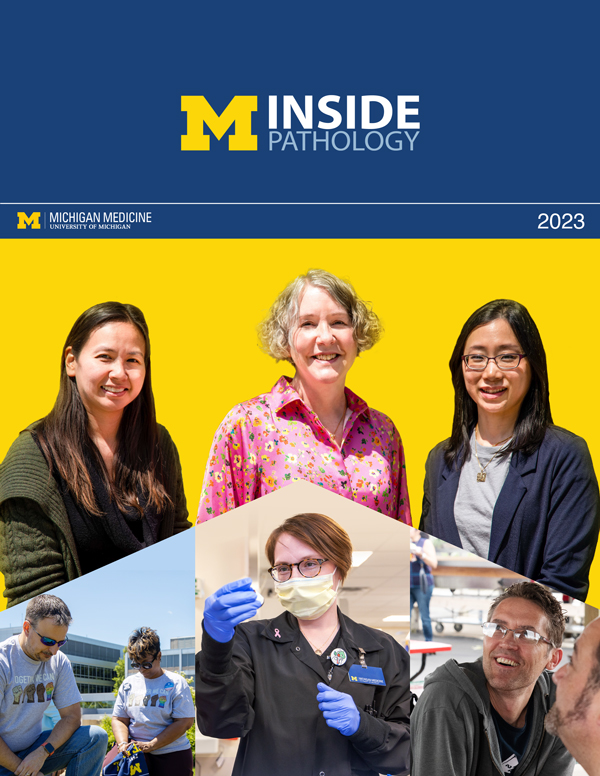 ON THE COVER
ON THE COVER
(Left to Right) Drs. Angela Wu, Laura Lamps, and Maria Westerhoff. 2023Department Chair |

newsletter
INSIDE PATHOLOGYAbout Our NewsletterInside Pathology is an newsletter published by the Chairman's Office to bring news and updates from inside the department's research and to become familiar with those leading it. It is our hope that those who read it will enjoy hearing about those new and familiar, and perhaps help in furthering our research. CONTENTS
|
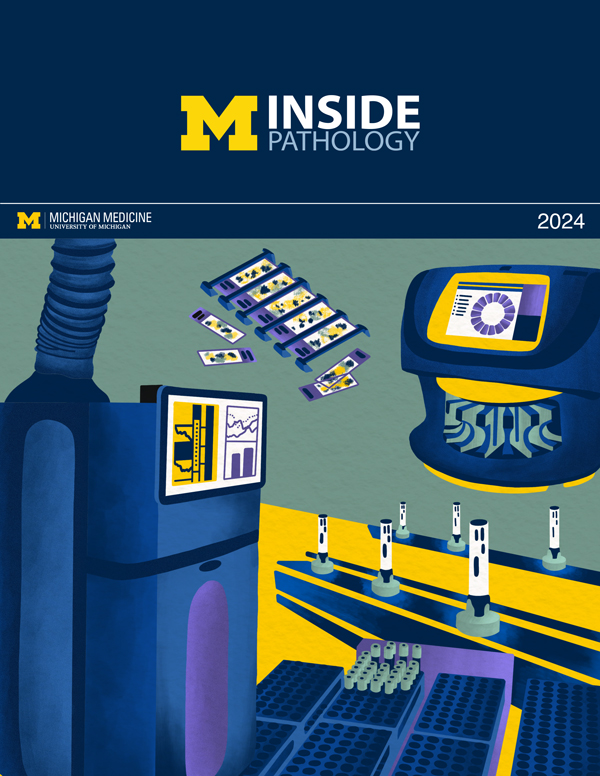 ON THE COVER
ON THE COVER
Illustration representing the various machines and processing used within our labs. 2024Department Chair |

newsletter
INSIDE PATHOLOGYAbout Our NewsletterInside Pathology is an newsletter published by the Chairman's Office to bring news and updates from inside the department's research and to become familiar with those leading it. It is our hope that those who read it will enjoy hearing about those new and familiar, and perhaps help in furthering our research. CONTENTS
|
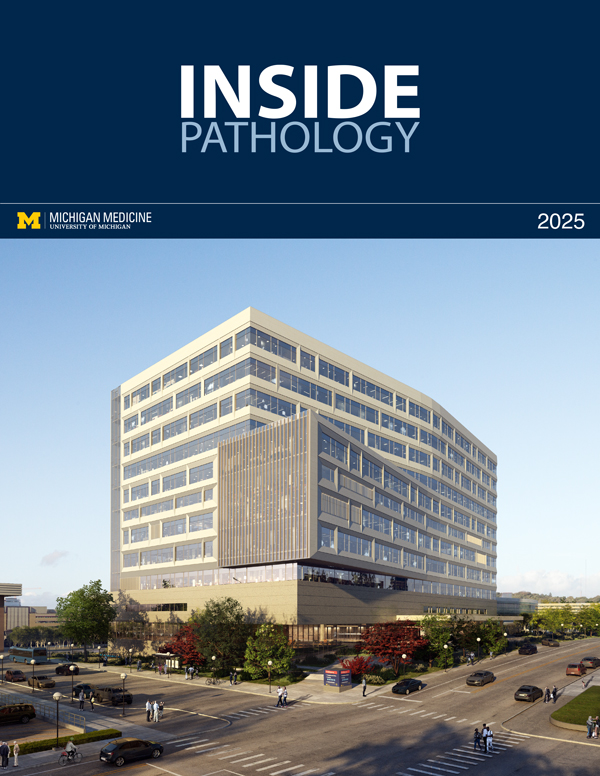 ON THE COVER
ON THE COVER
Rendering of the D. Dan and Betty Khn Health Care Pavilion. Credit: HOK 2025Department Chair |

newsletter
INSIDE PATHOLOGYAbout Our NewsletterInside Pathology is an newsletter published by the Chairman's Office to bring news and updates from inside the department's research and to become familiar with those leading it. It is our hope that those who read it will enjoy hearing about those new and familiar, and perhaps help in furthering our research. CONTENTS
|

MLabs, established in 1985, functions as a portal to provide pathologists, hospitals. and other reference laboratories access to the faculty, staff and laboratories of the University of Michigan Health System’s Department of Pathology. MLabs is a recognized leader for advanced molecular diagnostic testing, helpful consultants and exceptional customer service.